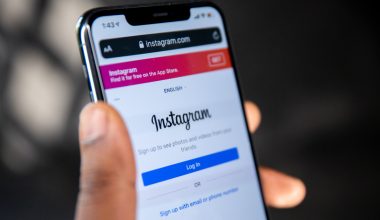Too many companies overestimate how memorable they are to customers. This covers all kinds of interaction with your business, from advertising and branded content to events and trade shows. It’s often claimed that the abundance of distractions is the biggest foe for brands that want to be memorable.
And to be fair, people are more distracted than ever – and that doesn’t help. But the difficulty brands face comes more from what they’re choosing to communicate with each interaction, and how they do it.

The forgetting curve: a brand’s worst nightmare
First, let’s look at some numbers to understand the scale of the issue. The ‘Forgetting Curve’ was introduced in 1885 by Hermann Ebbinghaus. It showed how newly acquired memory degrades over time, and uses empirical evidence to enumerate just how fast and how much we forget. Although the methodology behind was not rigorous, his findings have remained accurate. He discovered that only 34% of the information can still be recalled after 24 hours.
This picture is backed-up by other studies too. In particular, 80% of consumers will forget your branded content within 3 days of exposure. When we look at video advertising (which is generally regarded as highly impactful), people will only remember 50% of what they saw, just one day later.
Of course, it makes sense that the human brain doesn’t remember everything. Being able to weed out information that isn’t useful makes it easier to recall pertinent information when the time calls for it.
How to overcome the forgetting curve
One thing highlighted by Ebbinghaus’ original research was the positive effect of repetition on learning. By repeating the learning activity at one-day intervals for four days, almost all the information can be recalled. This has a long-lasting effect too. Repetition is one of the most basic tactics, and it’s been used by the advertising industry for decades. However, this can get expensive and it’s a blunt instrument when your messaging isn’t right to begin with. There’s an easier way.
3 Reasons people forget your brand’s content
It’s irrelevant
Studies show that irrelevant information is easily forgotten. So, it’s important to focus on messaging that has urgency and relevance for your target audience.
No motivation
If there’s no motivation to remember something, why bother? You need to give customers an emotional reason to remember something. A message that has an emotional impact, especially a positive one, is more easily remembered.
Too much
Cognitive overload can cause people to fail to fully grasp what’s being communicated, and this makes it almost impossible to remember afterwards. Be economical with what you communicate – think of it as a trickle, not a waterfall.
Use storytelling to trigger relevance and emotion
Storytelling is one of most effective tools for creating memorable communications and interactions with the customer. It works because our brains have evolved alongside storytelling as our main way to communicate complex and relevant information. It encodes information as a synthetic experience that’s enjoyed (vicariously) by the audience, as they project themselves into the story.
Anecdotes are one of the most basic forms of storytelling, usually communicating a ‘moral’ to the tale. Both anecdotes and testimonials have remained one of the most effective ways to communicate memorable messages, and these are still used widely in advertising today.
Storytelling works by stimulating the release of specific neurotransmitters, each of which has different effects. When we look at these in relation to the 3 reasons above, it’s clear just why storytelling is so important.
Oxytocin
This is the friendship and trust hormone. It’s released when people identify with someone ‘like them’, or feel part of the tribe. This is step one in your story, typically with a relatable character the audience identifies with, but also music or situations that reflect their identity.
Cortisol
Cortisol triggers the release of adrenaline, but is a stress chemical in its own right. Storytelling causes the release of cortisol by creating tension in the story. For example, by showing what’s at stake if things go wrong, or that ‘teetering on a cliff edge’ moment. The result is that the brain is paying very close attention – because it’s relevant.
Dopamine
This is the reward chemical, released when the story reaches a satisfactory conclusion. This is the moment the protagonist triumphs over adversity, and when the bad guy gets what’s coming to them.
Serotonin
Most people know serotonin as the brain’s ‘happy chemical’. This one’s a bonus, because you don’t need it in every story, but it contributes to a good feeling. Due to the halo effect, this good feeling can spread to your brand too – so it’s definitely worth it. Serotonin is stimulated by things that make us happy: a joke, cute kittens, or just seeing other people smile.
Spreading your message with digital storytelling
Digital storytelling is the best way to achieve memorable messaging. It also has the massive advantage of being distributed through a wide range of different potential channels.
Digital storytelling can be used in immersive experience rooms, online videos, or on digital signage, to name a few possibilities. This means there are nearly endless ways for your brand content to reach the intended audiences.

How to use digital storytelling in practice
The fantastic thing about digital storytelling is that it can reach multiple audiences in many different ways. Digital stories can be customized to resonate with different audience groups, by changing the emphasis, switching characters, changing the music, or re-ordering the scenes. To do this effectively however, you need digital storytelling software.
What is digital storytelling software?
Digital storytelling software allows you to assemble unique digital stories from video content, and deploy it with a range of technologies. It can utilize modular principles to construct stories and support them with data, branding, a great soundtrack, and other material.
Using a customer experience center for storytelling
A customer experience center is a dedicated space for telling your brand story, and demonstrating what you can do for your customers. A customer experience center is the modern form of what used to be known as executive briefing centers. Digital storytelling software is commonly used to control these venues, by making sure that every possible touchpoint works in concert towards a common goal, with the right content and branding for each customer.
Storytelling online
Digital storytelling is perfect for distributing via the internet. You can show digital stories as videos on your website or on social media. Your webinars and presentations can also use digital storytelling elements to drive home the importance of certain key issues, and create more engagement.
A memorable conclusion
Will you remember reading this article? If you find it relevant to your situation, then the chances are you’ll recall the most important parts for some time. If your life depends on it, then it’s even more likely.
The most important thing to remember is that you can be more memorable by using storytelling, and making your stories highly resonant with your target audience. With storytelling as your secret weapon, you’ll stick in their memories for much longer.





